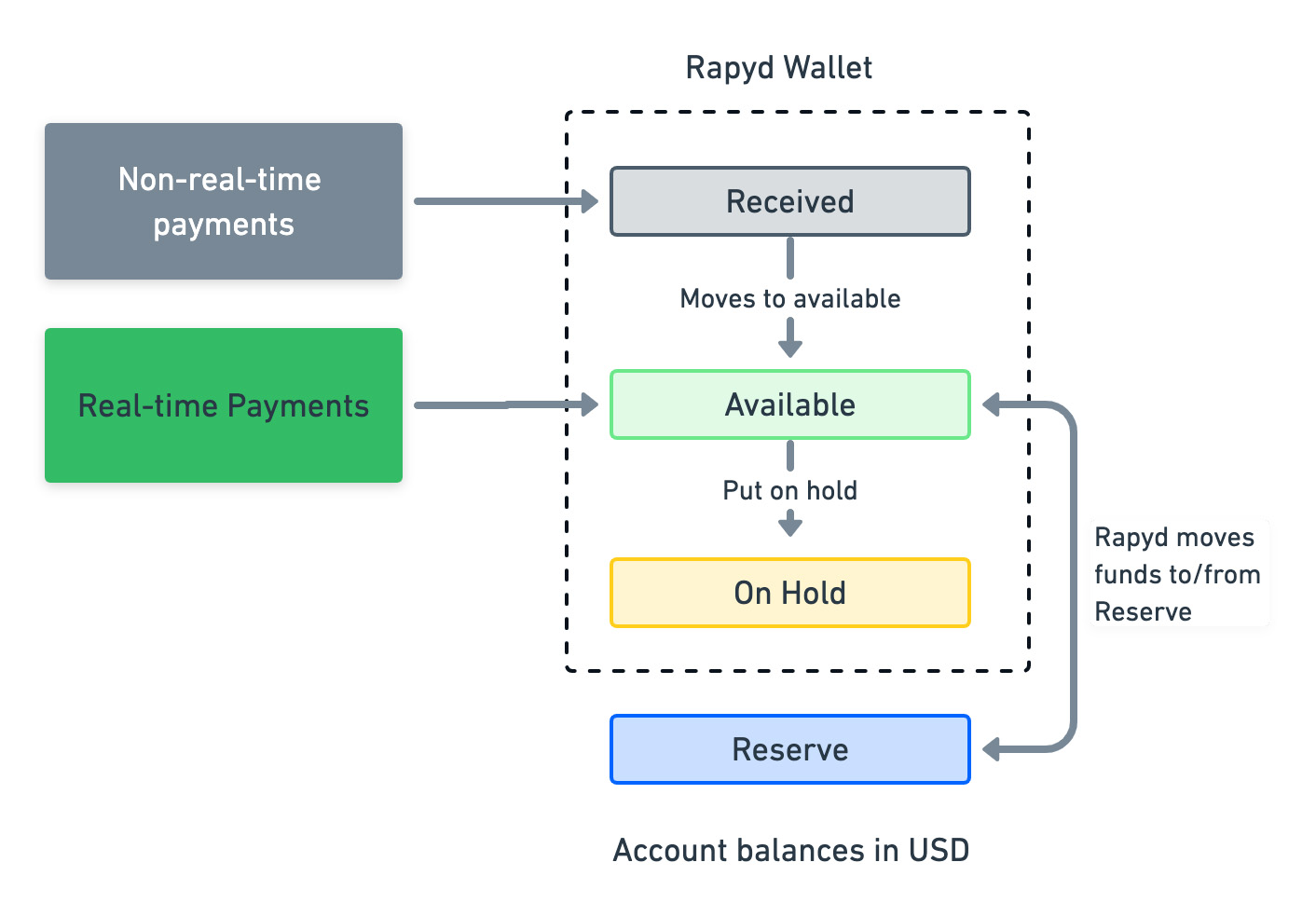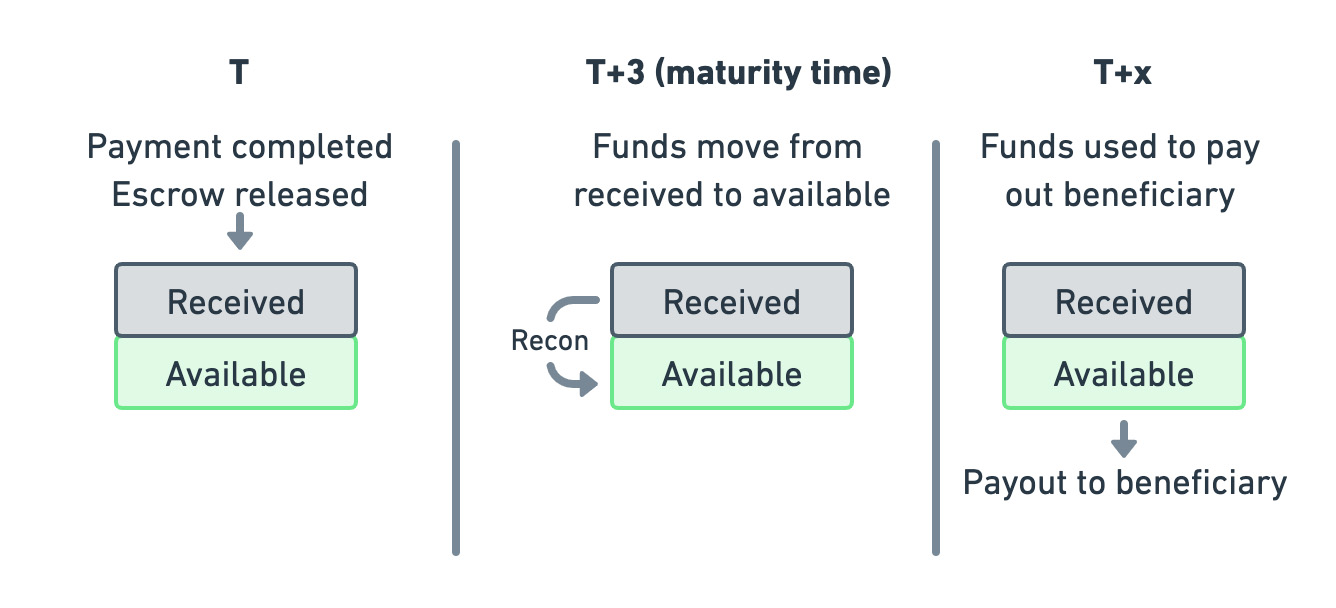Balances
Gain more control over your funds with advanced balance features. | Enterprise
Balance types display the amount of funds in a Rapyd Wallet at any time. With multiple balance types, Rapyd Wallet provides visibility into all of your funds so you can more effectively manage your cash flow. Balance types are reflected in both Client and User Wallets.
There are four balance types:
Available Balance: available funds for you to use.
Received Balance: total amount that has been collected but is not yet available.
On Hold Balance: allows you to set money aside and release funds at a later date.
Reserve Account Balance: required balance to cover chargebacks, returns, and other items.

Note
A real-time payment (RTP) includes: transfer from wallet in-network, transfer from bank account, reversal of card authorization, deposit at POS, and cancelled payout.
Funds that can be withdrawn/disbursed by the account owner. Once the reconciliation process is completed, the funds that have been received are now moved into the available funds. Most actions interact with the available balance such as payouts, currency conversion, and withdrawals.
Funds collected and posted to a Rapyd wallet. The funds have not yet settled, and are not yet available for the client to use. The settlement period is determined by the contract/agreement between Rapyd and the client. Funds typically show in received balance when non-real-time payments are received and the funds will settle over time.
The client can control the funds of user wallets, and put funds aside. There are API calls for putting funds on hold and releasing funds that are on hold. This is the only balance type that the client can manipulate.
All clients will have a reserve account, these funds are usually in USD, but can be in a different currency based on what is agreed upon in the contract with Rapyd. The reserve shows how much money has been deposited. This is also referred to as the collateral account. The minimum amount required in your reserve account is determined as part of your agreement with Rapyd.
Multiple Currency Balances
You can hold multiple currencies as long as you have access to the country's payment method. For example, if you can accept payment methods in the Mexico, Thailand, or Singapore, you can hold their currencies. If you do not have access to one of the country's payment methods (e.g. Japan), you will need to request the PMT as described in Viewing Payment Methods.
Client and user wallets examples include any non-real-time payments or real-time payments (RTP) as described below:

A non-real-time payment (RTP) is completed and received balance is posted in client's wallet.
After maturity time passes, funds move from Received to Available in client's wallet.
If client opts to automated settlement the funds settle to client's bank account.

A non-real-time payment is completed and received balance is posted in client's wallet.
After maturity time passes the funds move from Received to Available in client's wallet.
Client can use the collected funds to disburse out.

A real-time payment is completed and available balance is credited in client's wallet.
Funds immediately available in client's wallet.

A real-time payment is completed and available balance is credited in client's wallet.
Funds are available in client’s wallet.
Client uses Payout API to transfer funds to customer's bank account.

A non-real-time payment is completed → Received balance is credited.
After maturity time passes → Reconciliation (Recon) engine moves funds from Received to Available.
You can use the collected funds to payout out to a beneficiary.
Create Your Payment to send to a Wallet. Refer to Integrate Payment Methods for more details.
When the Payment is confirmed you can retrieve balances of wallet accounts with the ID of the Rapyd Wallet.
Path Parameter | Description |
|---|---|
wallet | ID of the Rapyd Wallet. String starting with ewallet_ |
The client can use the Put Funds on Hold API Call to place a hold on any designated funds for a user wallet. They can release funds using the Release On-Hold Funds.
Body Parameter | Description |
|---|---|
amount | The amount of the transfer. |
currency | Three-letter ISO 4217 code for the currency used in the |
ewallet | ID of the wallet associated with the contact. String starting with |
More details on the wallet object are described on the Transaction Types page.
Refer to the Client Portal Guide for Wallets in Client Portal.